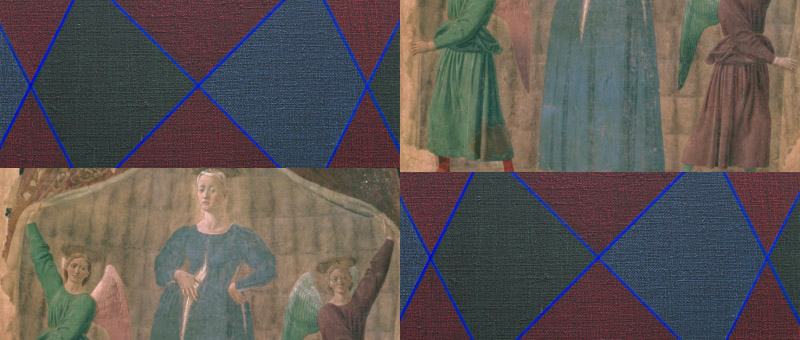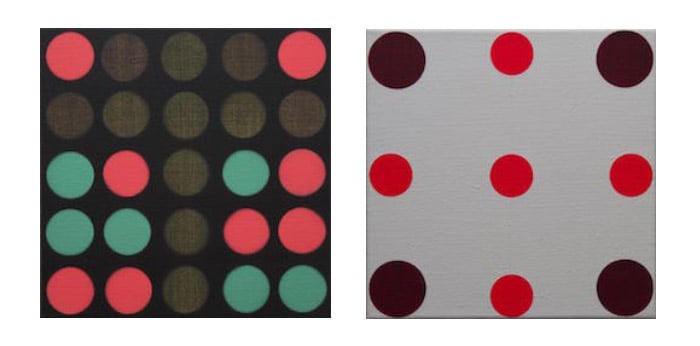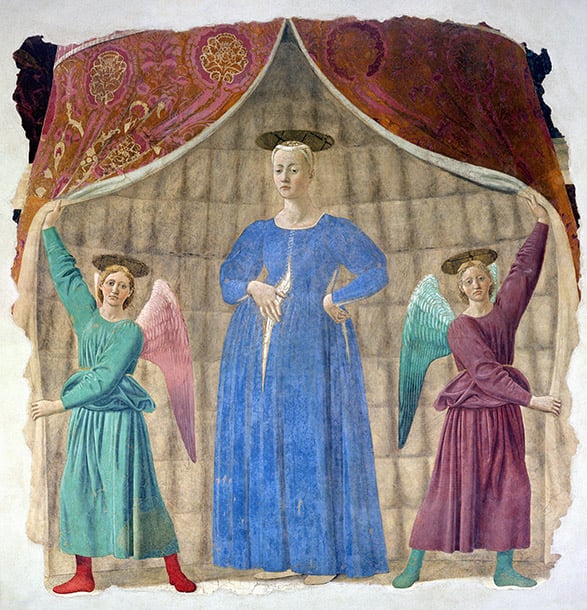
ANNODAM by Katrina Blannin
Katrina Blannin‘s work is ardent in its pursuit of clarity, order, precision and purity of style. She reveals a consistent vision for resolving the conflict between the depiction of an objective reality and the artist’s subjective need to re-shape the given world in a style which resonates with the representational codes of our time. Blannin has blended the humanist ideas of the early Renaissance with the purity of Constructivism’s formal qualities so that different levels of meanings and associations become apparent.
The presence of formal similarities in Blannin’s work with artists as disparate as Agnes Martin and Piero della Francesca can be seen as proof of conceptual complexity, cultural pluralism and post-modern cultural vitality. The past is a place to be scavenged, recycled paraphrased and re-presented to a modern audience. Blannin’s works do not veil themselves with a rhythmic music of forms, but synthesise memory and content into an evolving psychological gestalt.

Left: Red, 2016
Right: Red in Four Directions, 2016
Deconstructing a Renaissance Masterpiece
Blannin’s paintings are concerned with depth, rhyming shapes, symmetry, balance and other core mathematical qualities. Standing behind her most recent oeuvre is Blannin’s deep study of Piero della Francesca’s celebrated painting of Madonna del Parto and the whole tradition of Renaissance humanism. Blannin refers the optical and sensory information from Piero’s profoundly moving fresco of a swollen-bellied, fecund Mary to a stock of schema and mental templates located deep in her consciousness. Lines traced across space serve as signifiers of movement and time, a form of self-inscription and codifier of emblems which are as mysterious to the viewer as the Eucharistic symbolism in the Madonna del Parto.
Piero’s work is suffused with iconographical and hieratic riddles and is enlivened by the Virgin’s enlarged and distended abdomen, the suggestive slit of her maternity dress, revealing a blaze of white from her undergarment. Blannin excavates Piero’s work to scavenge, recycle quote, paraphrase and sometimes parody the painting’s inner forms and structures. Her paintings synthesise memory and sensation into the certainty of structure, geometry and the grid. Just as Piero’s fresco shows that a range of meanings can co-exist – the mystery of the Incarnation juxtaposed with the matter-of-factness of childbirth – Blannin’s work sustains multiple meanings as she experiments with the formal qualities of paint, developing the aesthetic and perceptual possibilities afforded by deconstructing a Renaissance masterpiece.
The painter and the subject, past and present, the conscious and the unconscious are fused in a space-time continuum which challenges the conventional reality of single perspective painting determined by the static viewer. Just as Piero places the Virgin Mary, the vessel of the New Testament, within the “container” of the Old Testament Tabernacle, Blannin evokes the integrative process of art as a drama of individual and cultural identity by using vivid colours, converging and diverging lines, exploring the relationships of spatial dynamics between abstract shapes and forms and geometric structures. By doing so, Blannin unlocks a dynamic field of linear energy derived from the internal geometry of Piero della Francesca’s great masterpiece, finding the balance between the visible and invisible, the material and the immaterial, the poetic and the concrete.
KATRINA BLANNIN: ANNODAM is at Jessica Carlisle, 4 Mandeville Place, London W1U 2BF, 11th March – 9th April, 2016

